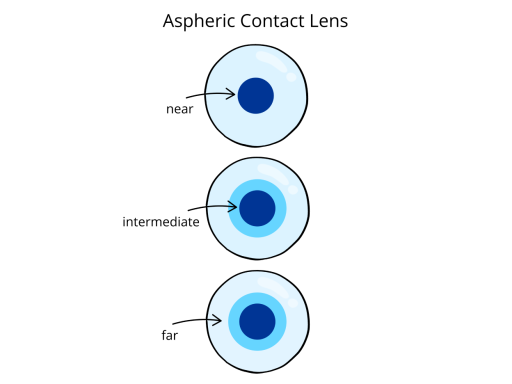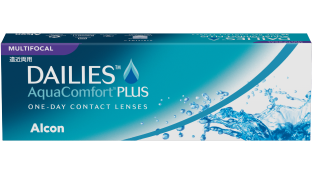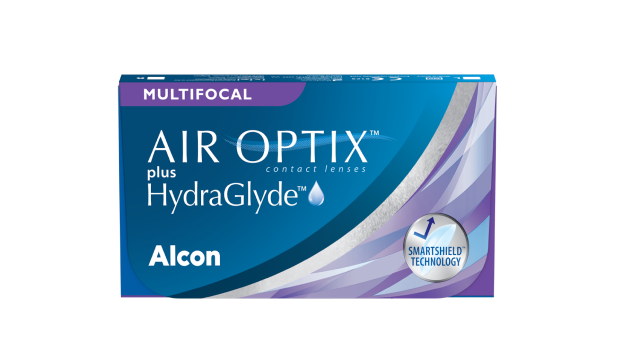Vision Condition
Presbyopia: Symptoms, Causes, and Treatment1,2
5 mins read
If you think about what really matters to you, in terms of your health and wellbeing, good eye care probably comes high on the list. But when you try to find out how your eyes work, you often end up drowning in Greek. So here, in plain English, is an explanation of a very common eye condition: Presbyopia.
The word literally means “old man’s eyes,” which is a rather indelicate way of saying this is an age-related condition. The term reflects the loss of elasticity of a lens in the eye, which starts from birth (when your eyes are highly elastic) and usually becomes obvious in your mid 40s to early 50s (when they are not!).
It’s all natural and normal, but it’s still annoying, because it makes it harder to read or see things close up. If you are part of an age 40+ group in a restaurant, you may see some of your fellow diners squinting as they move their menus further from their faces, trying to bring the words into focus. Or, you may be the 50-year-old struggling to read (or understand!) the emojis your kids have used in a smartphone message.
That’s Presbyopia in action!

We expect things to become less robust or powerful over time. Presbyopia is simply the natural loss of the eye’s ability to focus on nearby objects. It happens to everyone.
As the lens in the eye becomes less flexible, it loses its ability to change focus quickly and accurately, especially over a range of distances. Not only do you lose your power to see as clearly as before in close-up, but you may also develop headaches through eye strain.
Symptoms of presbyopia include:
1. Blurred vision when reading or doing close-up work.
2. The need to hold reading material at arm's length to see it clearly.
3. Eyestrain or headaches after doing close-up work.
4. Difficulty focusing between near and distant objects.
The neat solution to Presbyopia is wearing a bifocal or multifocal (also known as varifocal) contact lens.
A bifocal contact lens delivers two prescriptions (covering near and distance vision) within one lens, while multifocal contact lenses combine a selection of different powers to correct vision. If you come across the term ‘multifocal contacts’, it describes any contact lens with multiple (more than two) powers.
A lot of people don’t know (or believe) such contact lenses exist. It seems amazing that a tiny sliver of translucent, transparent material can perform such wonders, but it does—correcting vision at all distances, so that near, intermediate and distant objects all stay sharp and clear when you look at them.
Some of these lenses are designed like archery targets, with concentric rings. Each alternates in power, correcting for near then distance vision from the center of the lens to its edge.
An alternative design is ‘aspheric’, which means the lens corrects for near vision at the center, then the power gradually increases outwards—initially correcting for intermediate sight needs, with the outer section used to correct for distance.

Since Presbyopia develops gradually, many people barely notice its arrival, or simply get used to poorer vision when looking at nearby objects. Although it starts slowly, one day they wake up with a sudden realisation that their near vision quality has become a real problem.
Then, when they try a multifocal contact lens, the effect can be amazing. Instantly, lines become crisp, vision works at all distances, and the world becomes clear again. A smartphone becomes as easy to read as a distant road sign—and that hazy restaurant menu becomes focused, too. A previously blurry book page turns into a rediscovered joy, while the TV screen is also startlingly clear. Magic has happened!
Another obvious benefit of multifocal contact lenses is the chance to move on from a world dominated by endless pairs of glasses, where you can never find the ones you need!
No more perching them on your head, hanging them round your neck, forgetting to take them with you, or losing them around the house, airplane or train. Multifocal contact lenses spell the end of rummaging in a bag, trying to locate the right glasses.
That said, there is always a place for a backup, so most contact lens wearers like to have a pair of similarly specified physical glasses, for use when not wearing contact lenses. For very specific tasks or circumstances, like doing detailed close-up work, some people wear reading glasses on top of their lenses, though this is slightly fiddly and relatively rare.
In every case, the move from glasses (or uncorrected poor vision) to multifocal contact lenses is likely to be revolutionary. Instead of an awkward array of physical frames, you just insert your multifocal contact lenses—then forget about them.
Immediately, the lenses work at every distance: near, intermediate and across far horizons. And they do all of this simply and without you even noticing.

If you are a glasses wearer, or someone whose perfect vision seems to be a thing of the past, which lenses should you choose, to regain effective vision at all distances?
As always, your best guide is your optician, whose recommendation reflects not only experience and expertise, but also your specific eye condition and needs.
This consultation may point you in the direction of daily disposable multifocal contact lenses. These are examples of lenses you replace with new ones every day. Each is made from a unique material tailored to address specific needs you may have, ensuring clarity and comfort across all vision distances.
However, if you and your optician determine that monthly replacement multifocal lenses would be more suitable for you, then there are soft multifocal contact lenses available that could be the right fit.
By all means ask your optician if they have any free trial lenses. In fact most contact lens manufacturers do offer free trial vouchers, but you should expect them to charge for an initial appointment and ongoing services (covering their time, facilities and equipment).
At your eye exam, the optician will test your eyes and find the most appropriate solution, based on your specific multifocal needs. You may, for instance, have astigmatism or another condition, which responds better to one lens type than another.
The important fact—and good news—is that there is a multifocal lens for you. It can’t stop presbyopia from being a difficult word, but it can help you see better and make it a thing of the past - corrected and forgotten about, every day!


DAILIES TOTAL1™ MULTIFOCAL
See clearly at all distances, near through far,4,5 in a multifocal contact lens that feels like nothing.†6


DAILIES™ AQUACOMFORT PLUS™ MULTIFOCAL
See clearly at all distances, near through far,5 in an affordable daily disposable contact lens that features Blink-Activated Moisture for refreshing comfort with every blink.7


AIR OPTIX™ PLUS HYDRAGLYDE™ MULTIFOCAL
See clearly at all distances, near through far,5 in a comfortable monthly replacement contact lens.8-10
REFERENCES
†Based on 90.4% of wearers agreeing with the statement, "while wearing my lenses, I sometimes forget I have them on".
1.Presbyopia - Symptoms and Causes. Mayo Clinic Website. https://www.mayoclinic.org/diseases-conditions/presbyopia/symptoms-causes/syc-20363328. Updated November 20, 2021. Accessed September 2025.
2. Presbyopia - Diagnosis & Treatment. Mayo Clinic Website. https://www.mayoclinic.org/diseases-conditions/presbyopia/diagnosis-treatment/drc-20363329. Updated November 20, 2021. Accessed September 2025.
3. Stokkermans T. Multifocal Contact Lens Designs: Know the Players. Review of Cornea and Contact Lenses. Accessed September 2025 via: https://www.reviewofcontactlenses.com/article/multifocal-contact-lens-designs-know-the-players
4. Merchea M, Evans D, Kannarr S, et al. Patient and ECP Satisfaction in the United States with a Novel Water Gradient Daily Disposable Multifocal Contact Lens. Presented at the American Optometric Association Annual Meeting, June 20-24, 2018. Denver, CO.
5. Lemp J, Kern J. Alcon multifocal contact lenses for presbyopia correction. Paper presented at the Canadian Association of Optometrists Congress; June 28-30, 2017; Ottawa, ON.
6. Perez-Gomez I, Giles T. European survey of contact lens wearers and eye care professionals on satisfaction with a new water gradient daily disposable contact lens. Clin Optom. 2014;6:17-23.
7. Pruitt J. et. al. Triple-action moisturisers for increased comfort in daily disposable lenses. Optician 2007:27-28.
8. Eiden SB, Davis RL, Bergenske PD. Prospective study of lotrafilcon B lenses comparing 2 versus 4 weeks of wear for objective and subjective measures of health, comfort, and vision. Eye & Contact Lens. 2013;39(4):290-294.
9. Based on a 30-day clinical study of 75 habitual lotrafilcon B lens wearers; Alcon data on file, 2017. Study TDOC-0052679, p 24.
10. Lemp J, Kern J. A comparison of real time and recall comfort assessments. Optom Vis Sci. 2016;93:Eabstract 165256.
Data on file references available at AUS: 1800 224 153; Auckland NZ: 0800 101 106.
Consult your eye care professional for wear, care, precautions, warnings, contraindications and adverse effects.
ALWAYS READ THE LABEL AND FOLLOW THE DIRECTIONS FOR USE.
All content on this website is for informational purposes only, always talk to your health professional regarding your eye health or medical conditions.